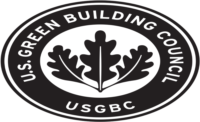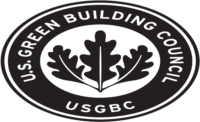The U.S. Green Building Council (USGBC) announced that the new version of the LEED green building program — LEED v4.1 — is now available for cities, communities, and homes. USGBC officials said LEED v4.1 certification recognizes leadership by emphasizing performance monitoring, fully integrated design, social equity, and human health factors.
“LEED v4.1 makes LEED the first green performance standard for buildings, communities, and cities,” said Mahesh Ramanujam, president and CEO, U.S. Green Building Council. “It is the most comprehensive, collaborative, accessible, and effective LEED system to date. This newest release complements the full suite of LEED v4.1 rating systems that are available today. We are excited and optimistic for the future as we continuously work to ensure that LEED is not only the de facto leadership standard but also a living standard.”
For the residential market, LEED v4.1 combines the familiar and relevant aspects from four previously-existing LEED for homes rating systems (LEED for Low-rise homes, LEED for Midrise Homes, LEED for Core and Shell, and LEED for New Construction) to deliver three rating systems — LEED v4.1 Residential: New Single-family homes, LEED v4.1 Residential: New Multifamily homes, and LEED v4.1 New Multifamily homes core and shell.
According to USGBC, the updated rating system is designed to make the decision to implement LEED easier for residential projects and revitalize the approach to the housing market. Through a streamlined approach, LEED credits that have a higher value to homeowners and residents are prioritized, such as health and wellbeing, improved comfort, energy and water savings, green and healthy materials. Options have also been added to existing LEED credits that lower both hard and soft costs to achieve certification. The updated rating system is also further localized to meet the unique needs of different markets.
“USGBC believes everyone should have access to green, healthy, and sustainable homes and is committed to ensuring a sustainable future for all and raising the standard of living for people all over the world. We want to grow the number of LEED-certified affordable homes and increase access to green homes to all, especially underserved and underrepresented communities,” added Ramanujam.
For the LEED for Cities and LEED for Communities rating systems, LEED v4.1 expands on the earlier performance based approach to deliver a comprehensive framework to support plan, design, operation, and performance management phases of both new and existing cities and communities. The rating systems align with all the UN Sustainable Development Goals and incorporates leadership standards and best practices from complementary systems, like the previously integrated STAR Community Rating System, as well as the PEER, TRUE, EDGE, and SITES programs. More than 90 cities and communities around the world, representing more than 1 billion people, are LEED-certified based on several factors, including water efficiency, energy, greenhouse gas emissions, materials and resources, quality of life, innovation, and regional priorities.
“All over the world, leaders are recognizing the incredible opportunities that green building and green infrastructure present and a new generation of high-performance buildings, homes, communities, and cities are emerging,” added Ramanujam. “The success of LEED v4.1 will depend on our commitment to listen to new voices and integrate global best practices”
LEED v4.1 registration is open for all project types and registration and rating system materials are now available online. Go here to learn more.




